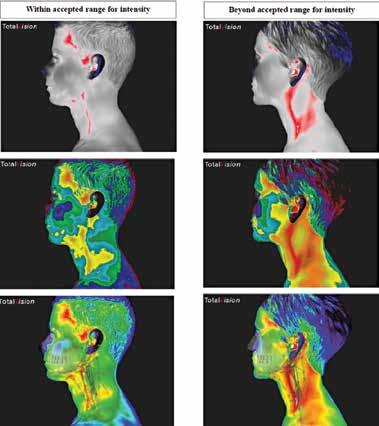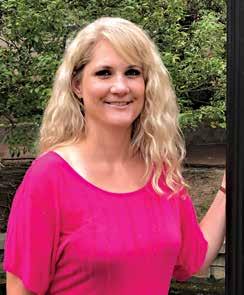
6 minute read
Health And Fitness
from AthensNowAl
Back To Basics - Quinoa
by Nick Thomas, owner of Prime Performance Training, and Certified Sports Nutritionist
Advertisement
This strange food everyone has heard of but no one can pronounce has a huge nutritional value. It can be extremely beneficial, and it might even be worthy enough to be deemed a “superfood.” Quinoa is botanically considered a seed rather than a grain. It is a broadleaf plant that produces seeds rather than fruit. Unlike actual grains, such as wheat and barley which grow in grasses, quinoa plants grow edible seeds. Because of this process, it is officially labeled as a “pseudocereal,” a seed used in nutrition the same way a cereal grain such as barley would be. Quinoa holds some pretty awesome anti-inflammatory and disease fighting properties. It is a rich source of complete protein, especially for a grain. The secret is lysine which is a rare amino acid not found in many other gains. This “super grain” reduces chances of developing type 2 diabetes, and can also help keep glucose levels balanced for those already affected by diabetes. The reason this works is because quinoa is rich in complex carbohydrates, or healthy carbohydrates, that slowly digest and keep the body full longer while maintaining blood sugar and appetite level. Magnesium, which is a vital mineral required for optimal metabolism, cardiovascular, and blood vessel function, is found in quinoa as well. For those who suffer from migraines, quinoa may be a great choice for weekly meals because it is high in riboflavin, or vitamin B2. This promotes blood vessel expansion in the brain and reduces the chances of migraines. If celiac disease or a gluten intolerance is an issue, quinoa should become a mealtime staple item. It is technically a seed; however, because it is unrelated to wheat, it makes the perfect substitute for pasta, wheat flour, oatmeal, and so much more. Quinoa is so diverse, it can be ground, boiled, baked, steamed, and even fried. There are three verities of quinoa -- white, red, and black. White quinoa is the most widely sold and takes the least amount of time to cook. Because it does not easily lose it shape during cooking, red quinoa is used mostly in salads or other recipes where a grain like texture is desired. Black quinoa actually has a bit of a different taste than the other two types. It has more of an earthy, sweet flavor and takes the longest to cook. Quinoa is a very practical superfood side dish that can easily be added to a weekly menu for the whole family. It can be found in the grain aisle at almost any grocery store these days. Simply follow the directions on the bag; just add a generous sprinkle of sea salt to the water for extra flavor. Bone broth can even be used instead of water when boiling for added flavor depth. Use quinoa instead of rice or other grains as a side dish to any meal or even mix it in with your salad for an added texture, taste, and nutritional punch. For more information regarding a personalized general or sports nutrition plan contact me at Prime Performance 423805-0870.

Cover Story Thermal Imaging Center: A Breakthrough In Health Care Imaging Services
by Cheree Vasquez
continued from page 1
tic approaches is what drives me. I previously worked in the medical industry where I gained experience in emergency department care, occupational health, and primary care. My experiences allowed me to see that most of the patients coming in for treatment were suffering from chronic conditions that were completely preventable. My own need for knowledge led me to the Institute of Integrative Nutrition (IIN), where I studied over 100 dietary theories, practical lifestyle management techniques, and innovative coaching methods with top health and wellness experts. After becoming a Certified Health Coach at IIN, I earned my Certification in Exercise Nutrition from Precision Nutrition, home of the world’s top nutrition coaches. A couple of years later, I decided to continue my education in prevention of disease and holistic alternatives to provide my clients a roadmap for optimal health. This desire led me to thermography, a unique technology that detects physiological changes that can lead to chronic disease. In June 2019, I received official training in technical and clinical thermography and became a certified thermography technician. Thermal Imaging Center was created and it became my dream career! Please read on to find out what thermography is and how it can benefit you. Have you ever heard of thermography or infrared imaging for the human sciences? If not, this is an opportunity for an astonishing discovery about the human body. If you have heard of thermography, this may offer you a new perspective and awareness for what it really offers.
Thermography is a highly sensitive study of the largest, most intelligent, and most available organ of the body: the skin.
Are you thinking, “Only the skin?” Here’s the good news about the skin: Central Processing Unit: The skin is like the body’s central processing unit that shares information between all systems, including the neurological, immune, and endocrine function and pathways. The skin has the information, and thermography functions as the monitor; it measures and evaluates the metabolic signals that change the temperature on the skin’s surface.
Non-Verbal Communication:
These temperature differences on the skin can’t be seen with the naked eye. Thermography can see the different color changes that can indicate a lack of oxygen, various types of trauma, and exposure to chemicals, radiation, hot and cold conditions, embarrassment, and stress. It also exposes signs of alcohol and tobacco abuse. However, these signs along with visible skin disorders are often a sign of morbidity or advanced damage -- even psychological disorders. The skin is constantly experiencing dynamic change. This change emits from the body as subtle voltage variations. Thermography is the interface offering another set of eyes for this invisible, unique, non-verbal communication. Not only is the skin a recipient of signals, but produces hormones that are released into circulation. Even before the patient or provider is aware, the skin is already shouting for help… but we can only see that invisible warning with an infrared device. The FDA accepts the following indications for use: “Thermography is intended for use as an adjunct to other clinical diagnostic procedures for quantifying and screening of differences in skin surface temperature changes.” Simple and so complete. It covers the whole body. The human body is miraculously programmed to maintain and heal itself as long as we don’t abuse it. Thermography, with its heightened sensitivity allows us the ability to observe the body in the process of prioritizing problem areas, so we can ask the question and see the answer to: “What is going on?” We can then investigate with focused guidance. Whether we realize it or not, we unconsciously look at people’s skin to evaluate their general health. Now we can intentionally and uniquely observe the skin for that very purpose. So you see, thermography is not just a device that sees heat, but it’s a health discovery tool! Thermography is not a standalone diagnostic tool. It can be used with any other test. That could be ultrasound, x-ray, mammogram, MRI, CT scan, etc. In fact, because the FDA identifies thermography as an adjunct to mammography, anyone who has ever had a mammogram should also have a thermogram!
Mindful Wellness - If you are a believer in mindful wellness, I invite you to discover the unspoken communication revealed by clinical infrared thermography. If you would like to schedule an appointment, please visit www.thermalimagingcenter. com or you can call me at 256337-1946. Also, if you have any questions about thermography, please shoot me an email cheree@thermalimagingcenter.com. I look forward to hearing from you!


Thermal Imaging Center
917 SW Merchants Walk, Suite C Huntsville, AL 35801 Hours: Monday and Tuesday: 10:00 AM - 4:00 PM Wednesday: 10:00 AM - 5:30 PM Thursday: 10:00 AM - 6:00 PM Friday: 10:00 AM - 2:00 PM Saturday and Sunday: CLOSED











